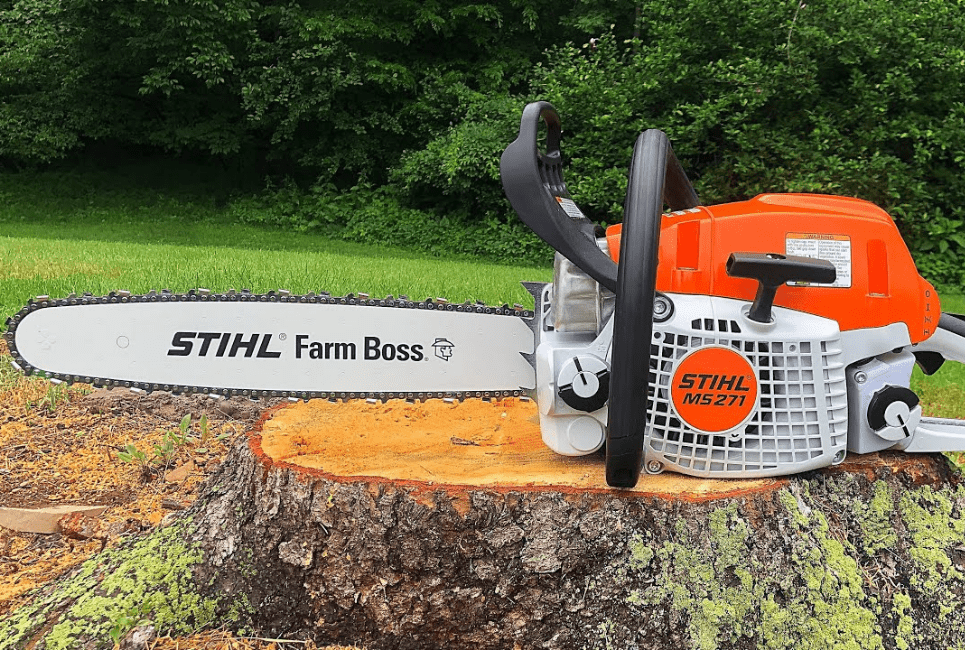

Under some cutting circumstances the bar moves towards the operator, who may suffer severe or fatal injury. This may fling the bar up and back in an uncontrolled arc mainly in the plane of the bar. The reaction of the cutting force of the chain causes a rotational force on the chainsaw in the direction opposite to the chain movement. Kickback occurs when the moving saw chain near the upper quadrant of the bar nose contacts a solid object or is pinched. How do I adjust the bar and chain on my chainsaw? This should re-seal the orifice and keep the oil from seeping from the output hole when the saw is stored. More often than not, all one needs to do is to take a small pin or needle and push it into the hole of the valve (identifiable as a small silver disk with a small hole in the center) about 6 or 7 times to loosen the debris. This would cause the oil to keep 'weeping' because there must be some measure of vacuum in the tank to keep the oil from flowing freely once the unit is shut down. Sometimes debris may become trapped between the ball and the hole. Once the vacuum is relieved, the spring pushes the ball back against the hole of the valve casing. The ball is pulled away from the hole, allowing air to enter into the tank and break the vacuum so that oil can continue to flow to the bar and chain assembly. This valve has an internal spring and ball type arrangement with the ball pressed against the vent hole of the casing of the valve, when the tank develops a vacuum from the normal process of the oil being pumped out. If the unit continues to seep oil after a few days, the problem may be the vacuum relief valve located in the side of the engine housing between the oil output hole and the bar stud(s).

This condition is deemed to be normal for any chainsaw with a similar bar & chain lubricating system.

These factors give the oil a very thick consistency, which in turn explains a slower flow rate. The fact that it appears to be continuing to seep after the unit is cut off for several days is owed to the viscosity of the oil and the anti-flinging compound (lithium) mixed with the oil at the refinery. As a general rule of physics, the oil will be pulled down by gravity once the chain stops turning, collecting at the bottom of the bar and seeping through the chain to puddle underneath the bar & chain assembly as well as under the drive sprocket. The amount of oil being circulated inside the bar at any given time can be between. The way our units lubricate a chain, most of the oil is distributed around the inside of the bar rails as it is circulated by the oil reservoirs in each drive link of the chain. Contact your STIHL dealer or the STIHL distributor for your area if you do not understand any of the instructions in this Manual.! STIHL TS 420 Cut-Off Machine General Satisfaction from your STIHL cut-off machine, it is important that you read and understand the maintenance and safety precautions, starting on page 3, before using your cut-off machine. Locating the serial number on your TS 420 hand held saw.
Wheres the serial number on stihl chainsaw manual#
If you can’t find your manual or are still unclear on the location of the serial number. One common challenge that occurs with the Stihl TS 420 saw isn’t. Locating the serial number on your TS 420. Email me or post on this thread the number. Model: easiest way is to look at any major assembly (like the plastic carb box cover) - the first 4 digits of the part number is the model.


 0 kommentar(er)
0 kommentar(er)
